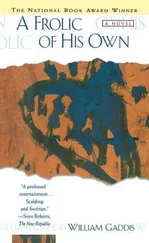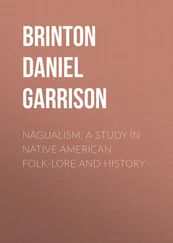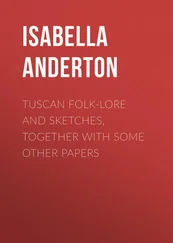William Furness - Folk-lore in Borneo
Здесь есть возможность читать онлайн «William Furness - Folk-lore in Borneo» — ознакомительный отрывок электронной книги совершенно бесплатно, а после прочтения отрывка купить полную версию. В некоторых случаях можно слушать аудио, скачать через торрент в формате fb2 и присутствует краткое содержание. Жанр: Старинная литература, foreign_antique, foreign_prose, на английском языке. Описание произведения, (предисловие) а так же отзывы посетителей доступны на портале библиотеки ЛибКат.
- Название:Folk-lore in Borneo
- Автор:
- Жанр:
- Год:неизвестен
- ISBN:нет данных
- Рейтинг книги:4 / 5. Голосов: 1
-
Избранное:Добавить в избранное
- Отзывы:
-
Ваша оценка:
- 80
- 1
- 2
- 3
- 4
- 5
Folk-lore in Borneo: краткое содержание, описание и аннотация
Предлагаем к чтению аннотацию, описание, краткое содержание или предисловие (зависит от того, что написал сам автор книги «Folk-lore in Borneo»). Если вы не нашли необходимую информацию о книге — напишите в комментариях, мы постараемся отыскать её.
Folk-lore in Borneo — читать онлайн ознакомительный отрывок
Ниже представлен текст книги, разбитый по страницам. Система сохранения места последней прочитанной страницы, позволяет с удобством читать онлайн бесплатно книгу «Folk-lore in Borneo», без необходимости каждый раз заново искать на чём Вы остановились. Поставьте закладку, и сможете в любой момент перейти на страницу, на которой закончили чтение.
Интервал:
Закладка:
William Henry Furness
Folk-lore in Borneo / A Sketch
In this short monograph I do not pretend to give anything more than a Sketch of the Folk-lore to be found among the Borneans. The island is large, and the people, scattered and isolated by constant inter-tribal warfare, differ one tribe from another, in language, customs and appearance almost more than do Germans, French, or English; to say that any tradition or custom is common to all the tribes, or even to all of one tribe, of Borneans, would be far too sweeping. A still greater drawback to any universality, in legend or custom, is that there is no written language, not even so much as picture-drawings on rocks to give us a clue to ancient myths or traditions. The natives of Borneo are in a certain sense savages, but yet they are savages of a high order, possessed of a civilization far above what is usually implied by the term; they live together in what almost might be called coöperative communities, they practise the art of weaving, they forge rough implements of iron, they cultivate rice and esculent plants, and in all their work, such as house-building, boat-building, manufacture of cloth and weapons of warfare, they show an ambitious desire, and a skilful ability, to ornament their work and add, to its usefulness, pleasure to the eye. One of their gravest faults, however, is their embarrassing tenacity to the fad of head-hunting, and a strict adherence to the principle of an eye for an eye and a tooth for a tooth. This keeps the different households, even of the same tribe, at constant war and makes inevitable an uncomfortable yet pleasing interchange of heads during the tedious months of the rainy season, when time hangs heavy on the warriors' hands, and disused swords might get rusty.
So little is known of the social and anthropological position of these people, to others than those who make Malaysia and the South Sea islands their study, that it may not be out of place to give a short description of the people themselves before entering on the subject of their Folk-lore.
The remote origin of the Borneans, as well as of the greater part of all of the inhabitants of the Polynesian islands, is an ethnological problem; they are not Malay, neither are they Mongolian nor Negrito; they bear resemblances here and there to all of these races, but not marked enough to claim any one as the parent stock. Furthermore, there is some evidence in favor of the theory that they are the result of successive migrations of tribes from northern India and from Anam.
The inland tribes of Borneo, by which I include all the natives except the Malays settled along the coast, are without any definite forms of religious worship; they make idols of wood, but I have never seen any offering made to them, nor do they regard them apparently as anything more than as scarecrows to frighten off evil spirits. They are the children of Dame Nature and as such have inherited their mother's disregard for life, and this feature of their temperament has kept them in a constant turmoil of warfare, which in turn compels them for mutual protection to band together in communities of several families and build for themselves a common house wherein to live, ever ready to turn out in force and resist the attacks of hostile tribes. In not a few instances these houses are as much as a quarter of a mile in length and shelter as many as four hundred people. Every household is presided over by a head-man known as the elder, or Orang Tuah , and he in turn is governed in a measure by the chief of the tribe, known as the Penghulu . The government of the household seems to be conducted in the quietest manner; I have lived on several occasions in these houses for three or four weeks at a time, and have never seen anything that could be called a violent quarrel between two members of the household, nor have I seen the Orang Tuah or the Penghulu submit any of the members to what might be considered harsh treatment. I have also been with them when they were out on the warpath, to use a North-American Indian term, when every nerve was at high tension on the look-out for enemies and every thought was turned to slaughter, but I have never seen the counsel of the Chief disregarded. Of course, some Chiefs are weak and fail to give commands because they are afraid to act, but a command once given is carried out, or at least not disregarded, and I could never detect any means which were taken to enforce an authority thus implicitly obeyed.
As a people, they are not active-minded nor industrious, but yield to the influence of climate, and, following the example offered to them by the vast, dense jungle on every side, accept life as easily as it comes. They are no exception to the rule that all untutored minds, living in constant communion with any awful aspect of Nature, be it gigantic mountains, a waste of waters, or an illimitable jungle, are saturated with superstitions; every pool, every tree, every rock is the home of an evil spirit, and all mysterious noises in the forest are ghostly whisperings. Everywhere are signs and omens to warn man of danger or direct his course; theirs is a life where no schooling is so vital as the ability to read aright the "sermons in stones, books in the running brooks." For them the world is the patch of jungle covering the few square miles that they know, and bounded by the hills in the distance; seldom do they get an extended view of the surrounding country; trees hem them in on all sides and the mountains are so difficult of ascent, and furthermore so infested with demons or "antu," that the summits can be gained only at the risk of body, and, still worse, of soul.
Many natives of the interior live and die with never a glimpse of the sea, and the tales which the Malay and Chinese traders tell of lands beyond the horizon where white men live, are as incomprehensible to them as are to us the conjectural accounts which astronomers give of the canals on the planet Mars.
Naturally enough, of course, creation began on the island of Borneo, or Kalamantan, as they call it, and the first people were Borneans and spoke the language of the tribe that tells the story. Every tribe has a different account of creation, and claims that its people sprang from the first created mortals. The following account is the story of Genesis according to the Kayans of Northwestern Borneo: —
In the old, old days, when there was nothing but water and sky, there fell from the heavens an enormous rock; that part of it which protruded from the water was hard, slippery, and quite bare, with no soil nor plants upon it of any kind. After a long time, however, the rains produced slime upon the rock, and little worms, called halang , were bred in this slime, and they bored into the rock and left fine sand outside of their burrows; this sand eventually became soil and covered the rock. Again years passed and the rock remained barren of all other life until suddenly there dropped from the Sun a huge wooden handle of a Parang (or sword) known as Haup Malat . This parang-handle sank deep into the rock and taking root in the soil it sprouted and grew into a great tree, named Batang Utar Tatei , whose branches stretched out over the new land in every direction. When this tree was fully grown, there dropped from the Moon a long rope-like vine known as the Jikwan Tali . This vine quickly clung to the tree and took root in the rock. Now the vine, Jikwan Tali, from the Moon became the husband of the tree, Batang Utar Tatei, from the Sun, and Batang Utar Tatei gave birth to twins, a male and a female, not of the nature of a tree, but more or less like human beings. The male child was called Klobeh Angei , and the female was called Klubangei . These two children married and then gave birth to two more children, who were named Pengok N'gai , and Katirah Murai . Katirah Murai was married to old man Ajai Avai , who comes without pedigree into the narration. From Katirah Murai and Ajai Avai are descended many of the chiefs who were founders of the various tribes inhabiting the land of Kalamantan; their names are Sejau Laho, Oding Lahang, from whom the Kayans spring, Tabalan, Pliban, and, finally, Tokong, the father of head-hunting.
Читать дальшеИнтервал:
Закладка:
Похожие книги на «Folk-lore in Borneo»
Представляем Вашему вниманию похожие книги на «Folk-lore in Borneo» списком для выбора. Мы отобрали схожую по названию и смыслу литературу в надежде предоставить читателям больше вариантов отыскать новые, интересные, ещё непрочитанные произведения.
Обсуждение, отзывы о книге «Folk-lore in Borneo» и просто собственные мнения читателей. Оставьте ваши комментарии, напишите, что Вы думаете о произведении, его смысле или главных героях. Укажите что конкретно понравилось, а что нет, и почему Вы так считаете.












